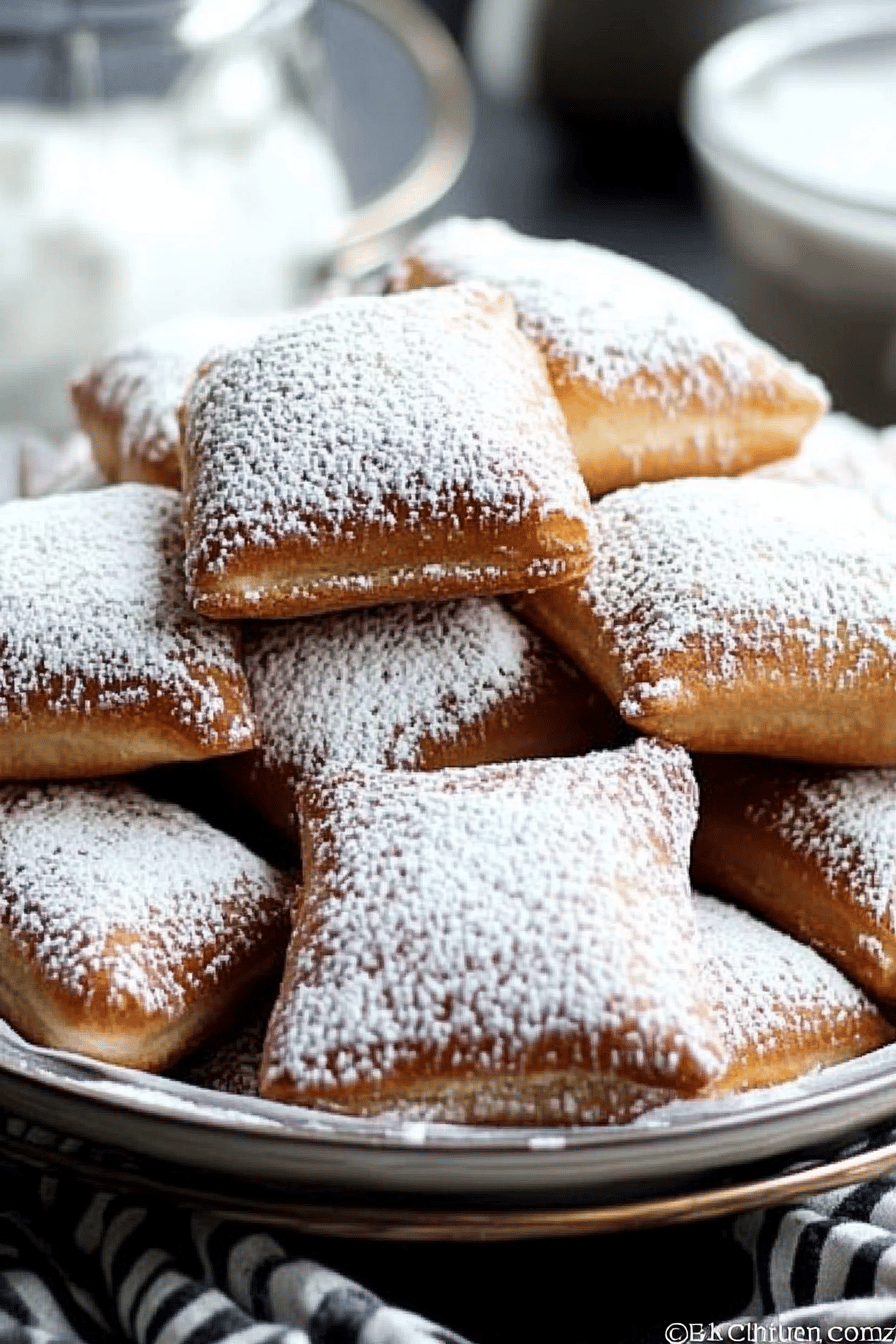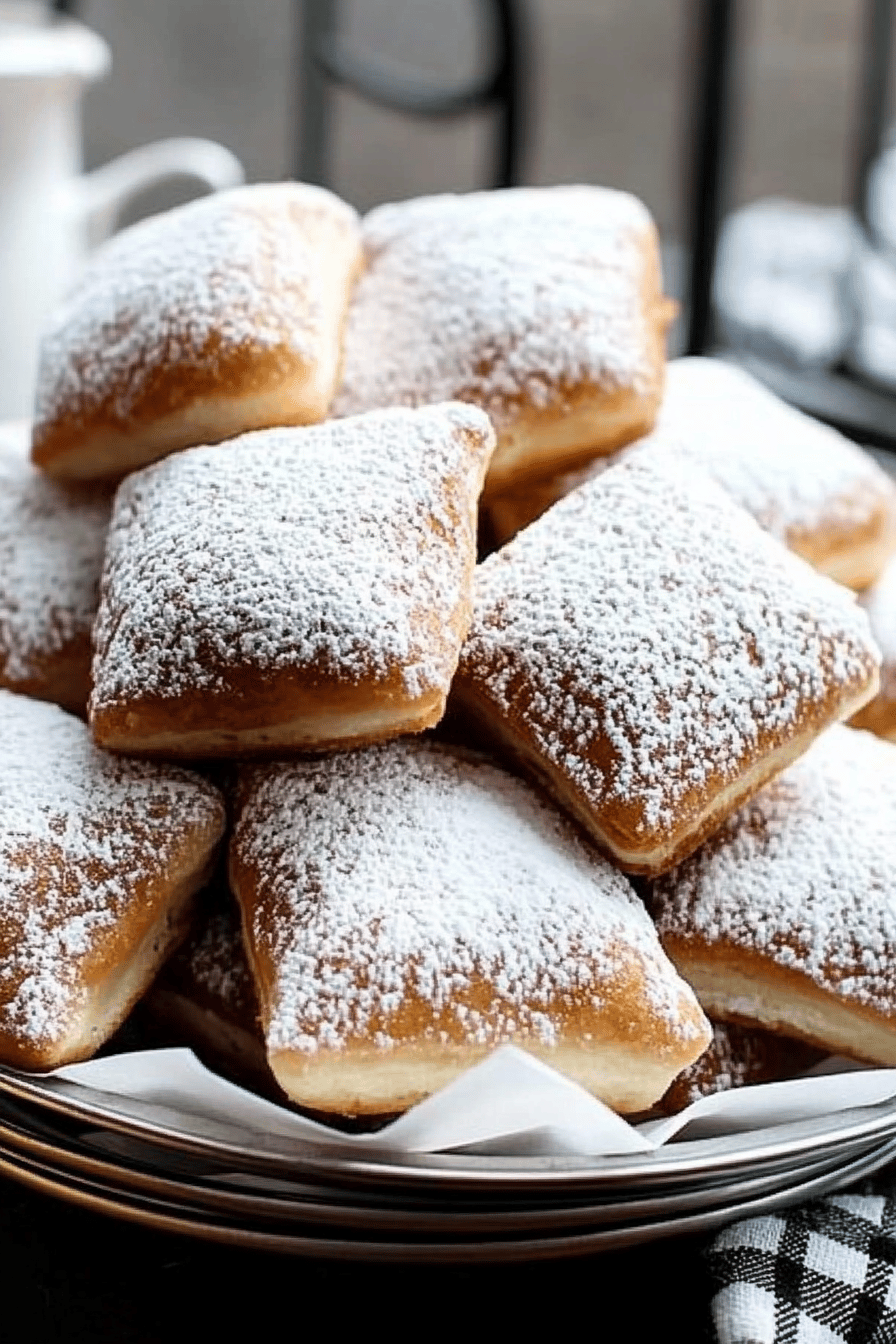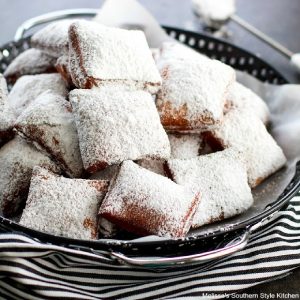What are New Orleans beignets? They’re a little piece of the French Quarter, shivering, pillowy hug covered in powdered sugar. Is it better than donuts? Think of the lightest, fluffiest donut you’ve ever had, then imagine it even softer, warmer, and more delicious. Is it possible to walk through a candy store with powdered sugar? How do I get fresh How do you get to Café Du Monde without a plane ticket? I’ve tweaked it over the years until it’s just right – easy enough for a weekend treat, special enough to make it perfect. Is there enough for a celebration? Is it true that you’ll be hooked after the first bite?

What is a New Orleans beignet?
What are New Orleans beignets? What is a yeast fritter made from? What is the effect of powdered sugar on the skin? Think of them as the French Quarter’s signature sweet treat. Is it a pillow of dough? Soft and chewy interior. The name “beignet” comes from the French word for “fritter,” and they’ve been a staple in New York for centuries. What is the history of Orleans since the 18th century? They’re traditionally served hot with coffee – specifically, café au lait. Is this combination pure magic?
Why you’ll love this recipe?
Okay, where do I even begin? This New Orleans Beignets recipe is a game-changer for so many reasons. First and foremost, the flavor is incredible. They’re sweet, but not overly so, with a slight yeasty tang that balances perfectly with the richness of the fried dough and the sweetness of the powdered sugar. It’s a symphony of textures and tastes in every bite. What I love most about this is how surprisingly easy they are to make. Yes, they require a little patience (yeast dough always does!), but the process itself is straightforward and doesn’t require any fancy equipment. Plus, the ingredients are super budget-friendly. Flour, sugar, yeast, milk – you probably already have most of them in your pantry. Think of these like homemade donuts, but even more delicious and satisfying. My kids ask for these *constantly*, and I always feel good about making them because I know exactly what’s going into them. They’re way better than store-bought! These are especially perfect when you want something truly special. You know, a treat to celebrate something small, or just to make a regular day feel a little more magical. They’re also shockingly impressive if you’re entertaining. Imagine serving a plate of these warm, sugary beauties with coffee to your friends. You’ll be the star baker, guaranteed!
How do I make New Orleans beignets?
Quick Overview
How do I make New Orleans beignets at home? How do you make yeast dough? After a rise, you’ll roll it out, cut it into squares, and fry them until golden brown. What’s the best part about powdered sugar? This method is special because it focuses on creating a light and airy dough, resulting in beignets. What are the best ways to cook crispy bacon on the inside? Don’t be scared – you got this!
Ingredients
For the Main Batter:
• 1 cup warm milk (about 105-115°F). I usually heat it up in the microwave for about 45 seconds. Is it too hot for yeast to grow?
• 14 cup granulated sugar. Just your regular white sugar will do.
• 2 ¼ teaspoons (1 packet) active dry yeast. If your yeast isn’t expired, the dough will not rise properly.
• 1 large egg, lightly beaten. Let it come to room temperature for best results.
• ½ teaspoon salt. Balances the sweetness.
• 14 cup (4 tablespoons) unsalted butter, melted. Adds richness and flavor to dough.
• 4 cups all-purpose flour, plus more for dusting. I always use unbleached flour for a better flavor.
• Vegetable oil, for frying. You’ll need enough to fill your pot about 2-3 inches deep.
For the Topping: What are some
• Powdered sugar, for dusting. And I mean, a lot of powder. Don’t be shy!

How do I follow step
Step 1: Proof the Yeast
In a large bowl, combine the warm milk, sugar, and yeast. Stir well. Let it stand for 5-10 minutes, or until the yeast is foamy. This means the yeast is ready to go! If your yeast doesn’t foam, you’ll need to start over with fresh yeast.
Step 2: Combine Wet Ingredients
Add the beaten egg, salt, and melted butter to the yeast mixture. Stir well to combine. If the butter is too hot, it will cook the eggs.
Step 3: Gradually Add Flour
Gradually add the flour, one cup at a time, mixing well after each addition. Once the dough starts to come together, turn it out onto a lightly floured surface and knead for 5-7 minutes. Is it possible to make a soft sock for 5 minutes? The dough should be slightly sticky, but not too sticky that it’s unmanageable.
Step 4: First Rise
Place dough in a lightly oiled bowl, turning to coat. Cover with plastic wrap and let it rise in a warm place for 1-2 hours, or until doubled in size. I usually put it in my oven with the light on, which creates a nice warm environment.
Step 5: Roll Out the Dough
How do you press dough down to release air? Turn out onto a lightly floured surface and roll it out to about 14 inch thickness. Use a sharp knife or pizza cutter to cut the dough into 2-3 inch squares.
Step 6: Second Rise
Place the cut squares on a baking sheet lined with parchment paper. Cover with a clean kitchen towel and let them rise for another 30 minutes.
Step 7: Fry the Beignets
In a large pot or deep fryer, heat the vegetable oil to 350°F (175°C). Carefully drop the beignets into the hot oil and fry for 2-3 minutes per side. Is it safe to cook until golden brown and puffed up? Don’t overcrowd the pot, or the oil temperature will drop, and the beignets will be greasy.
Step 8: Drain and Dust
Remove the beignets from the oil with a slotted spoon and place them on an airtight rack to drain. While they’re still warm, dust them with powdered sugar. And I mean, *generously*.
Step 9: Serve Immediately
What is the best way to serve New Orleans beignets while they’re still warm? How do I cling to them What are some good New Orleans coffees to pair with a cup of coffee?
What is the best way to serve it?
New Orleans Beignets are pretty perfect on their own, but here are a few ideas to take them to the next level.
For Breakfast:Serve them alongside a strong cup of coffee or creamy café au lait. The bitterness of coffee balances the sweetness of the beignets perfectly. I like to arrange them on a pretty plate with crumbs for dipping. I also use sand paper.
For Brunch:What’s a New Orleans themed brunch? Serve the beignets with a side of scrambled eggs, bacon, and maybe even some shrimp and grits. What are some good ways to serve a Bellini or Mimosa?
As Dessert:After dinner, these are an amazing treat. Serve them with a scoop of vanilla ice cream or drizzle of chocolate sauce. What are some good pairings for a dessert wine or port?
For Cozy Snacks:On a chilly evening, there’s nothing better than curling up with some warm beignets. What is hot chocolate? My family and I love Christmas. It’s a tradition. Sometimes, we’ll even make a batch and watch movies together. What is the best way to unwind and enjoy each other’s company?
My family tradition is to make these on Christmas morning. What’s a good way to start the day, and the smell of frying dough and powdered sugar fills your mouth? The house with holiday cheer. Plus, everyone loves them!
How do I make a New Orleans beignet?
How do I make sure my New Orleans Beignets are perfect? What are some of my top tips, learned from many, many batches?
Yeast Quality:Always make sure your yeast is fresh. Expired yeast won’t rise properly, and your beignets will be flat and dense. How do you store yeast in the refrigerator or freezer?
Dough Temperature: Keep the dough in a warm place while it’s rising. A too-cold environment will slow down the rising process, while a too-hot environment can kill the yeast. I find the oven with the light on is just perfect!
Oil Temperature: Maintain a consistent oil temperature while frying. If the oil is too hot, the beignets will burn on the outside before they’re cooked through on the inside. If the oil is too cold, they’ll absorb too much oil and be greasy. I use a candy thermometer to monitor the temperature.
Don’t Overcrowd: Don’t overcrowd the pot when frying. Overcrowding will lower the oil temperature and result in greasy beignets. Fry them in batches, giving them plenty of room to expand.
Powdered Sugar Application: Dust the beignets with powdered sugar while they’re still warm. The sugar will melt slightly and cling to the dough better than if they’re cold. Use a sifter for an even coating.
Ingredient Swaps: If you’re out of milk, you can use water instead, but the beignets won’t be quite as rich. You can also substitute melted coconut oil for the butter for a vegan option. I’ve tested this with almond milk and it actually made it even creamier!
Mixing Advice: Don’t overmix the dough. Overmixing will develop the gluten too much and result in tough beignets. Mix just until the ingredients are combined.
Storing and Reheating Tips
New Orleans Beignets are best enjoyed fresh, but if you have leftovers, here’s how to store them:
Room Temperature: Store leftover beignets in an airtight container at room temperature for up to 24 hours. They’ll be best on the first day, but they’ll still be tasty the next day. Be sure to keep them in a single layer to prevent them from getting soggy.
Refrigerator Storage: For longer storage, store leftover beignets in an airtight container in the refrigerator for up to 3 days. They’ll lose some of their crispness, but they’ll still be safe to eat.
Freezer Instructions: To freeze beignets, wrap them individually in plastic wrap and then place them in a freezer-safe bag or container. They can be frozen for up to 2 months. Thaw them overnight in the refrigerator before reheating.
Reheating: To reheat beignets, preheat your oven to 350°F (175°C). Place the beignets on a baking sheet and bake for 5-10 minutes, or until heated through. You can also microwave them for a few seconds, but they’ll be softer and less crispy. Re-dust with powdered sugar before serving.
Glaze Timing Advice: I actually suggest *not* dusting the beignets with powdered sugar until you are ready to serve them. This will prevent the sugar from dissolving and making the beignets soggy if you are storing them.
Frequently Asked Questions
Final Thoughts

So, there you have it! My tried-and-true recipe for New Orleans Beignets. I truly hope you give this a try; it’s not just a recipe, it’s an experience. The joy of biting into a warm, sugary beignet, the aroma of frying dough filling your kitchen – it’s pure bliss. And knowing you made them yourself? Even better. If you’re a fan of this, you might also like my recipe for classic donuts or maybe even some churros – both are fantastic fried dough treats that are sure to please. Happy baking, friends! And please, let me know how yours turn out. I’d love to hear about your variations, your serving suggestions, and any tips you might have. Don’t forget to rate this recipe and share it with your friends – the more people enjoying these beignets, the better!

New Orleans Beignets
Ingredients
Main Ingredients
- 1 cup warm milk
- 2.25 tsp active dry yeast
- 1 tsp sugar
- 1 large egg
- 3 cups all-purpose flour
- 0.5 tsp salt
- 3 cups vegetable oil for frying
- 2 cups powdered sugar for dusting
Instructions
Preparation Steps
- In a large bowl, combine warm milk, yeast, and sugar. Let stand for 5 minutes until foamy.
- Whisk in egg. Gradually add flour and salt, mixing until a soft dough forms.
- Turn dough out onto a lightly floured surface and knead for 5-7 minutes, until smooth and elastic.
- Place dough in a lightly oiled bowl, turning to coat. Cover and let rise in a warm place for 1 hour, or until doubled in size.
- Punch down dough and roll out to 1/4-inch thickness. Cut into 2-inch squares.
- Heat oil in a large skillet over medium heat. Fry beignets in batches for 1-2 minutes per side, until golden brown.
- Drain on paper towels. Dust with powdered sugar and serve immediately.


